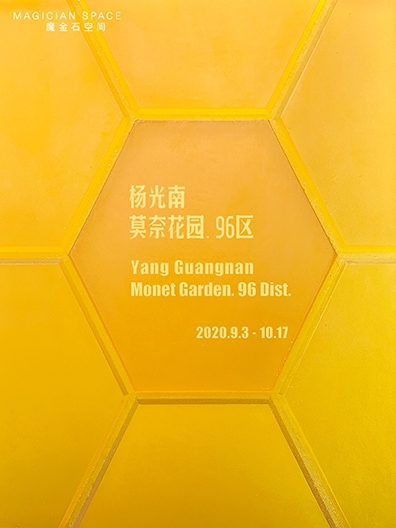
Monet Garden is an ongoing thread in Yang Guangnan’s art practice. Similar to ‘Sunny Venice’, ‘Roman Garden’, ‘Central Park’ these western names have been widely used in residential real estate and urban constructions in China. As a product of China’s economic reforms and market economy, ‘Monet Garden’ was particularly popular between the 1990s to 2000. This hybrid ‘Continental style’ mixed classical forms with modern architecture, that aspired to and imitated Western civilization, and even more so resolutely disregarded the collective and standardized aesthetics. These bootleg and unsophisticated generic construction are, in fact, fitting to the demands of the emerging Chinese middle class, where the barren landscape underscored broiling desires and the absence of spirituality. Driven by the individual’s or even the epochal desire for fortune and style, the one-dimensional imagination of what is considered ‘international’ manifests in a post-socialist reality where reverence for foreign things and respect for antiquity are in tandem.
Yang Guangnan’s Monet Garden sculptures are rooted in these imitations of Western architecture. In this series, ‘imitation’ is as much about the existing architectural models, as the approaches Yang Guangnan has adopted to translate them. ‘Imitation’, however, does not suggest ‘replication’. Although Yang Guangnan’s Monet Garden includes the conceptual and methodical components in the work of art: the stain-glass window and floor tiles are reproduced; building scraps are polished, cut and repurposed for valuable apparatus; the framework sets up confines, contours or even supports the illusion; resin congeals into a glass or amber-like texture, encasing murkiness with clarity. Yang Guangnan begins with the object and mobilize our general awareness of this reality through material and formal language. At the same time, they convey a romantic and ambiguous visual quality, recreating the much-criticized faux glitz and glamour, while implying the individual's most contradictory and sincere desire for a better future.
Monet Garden, accompanied the rise of Chinese society in the 1990s, was a temporary product formed spontaneously when the system and the economy sought alternatives. It was crass and crude, and a failure apparently. On the other hand, Yang Guangnan’s Monet Garden is akin to the scraps gleaned from collective memory and imagination. They are partial objects of a particular building or fossils that have been magnified several times, seen under the microscope. Through Yang Guangnan’s profiling and zooming-in approach, those grand landscapes projecting a variety of desires highlight the remaining aspirations abandoned by the times in the ruins and the reflections of the current dilemma of value judgment.
About the Artist
Yang Guangnan, borns in 1980 in Hebei, China, Yang Guangnan graduated from the Sculpture Department of the China Academy of Art with B.A in 2006, and the Sculpture Department of Central Academy of Fine Arts with M.A in 2009. Currently she lives and works in Beijing. Her works have been shown at Centre for Chinese Contemporary Art, Manchester, UK; FRAC, Nantes, France; The France Art Center, Melbourne, Australia; Macao Museum of Art, Macao; International Art village, Taipei; UCCA, Beijing; Minsheng Art Museum, Shanghai; National Art Museum of China, Beijing, etc..
Selected solo exhibitions include: Nothing, C5CNM, Beijing, 2020; Blind Spot, Fingerprint Gallery, Beijing, 2019; Dyspepsia, Taikang Space, Beijing, 2016. Selected group exhibitions include: Cold Expansion, Nanshanshe, Xi’an, 2019; Inner Scapes, Galleria Continua, Beijing, 2018; NOW: A Dialogue on Female Chinese Contemporary Artists, Centre for Chinese Contemporary Art, Manchester, UK, 2017; Turning Point: Contemporary Art in China Since 2000, Minsheng Art Museum, Shanghai, 2016.
About the exhibition
Dates: Sep 3, 2020 - Oct 17, 2020
Venue: Magician Space
Courtesy of the artist and Magician Space.




























